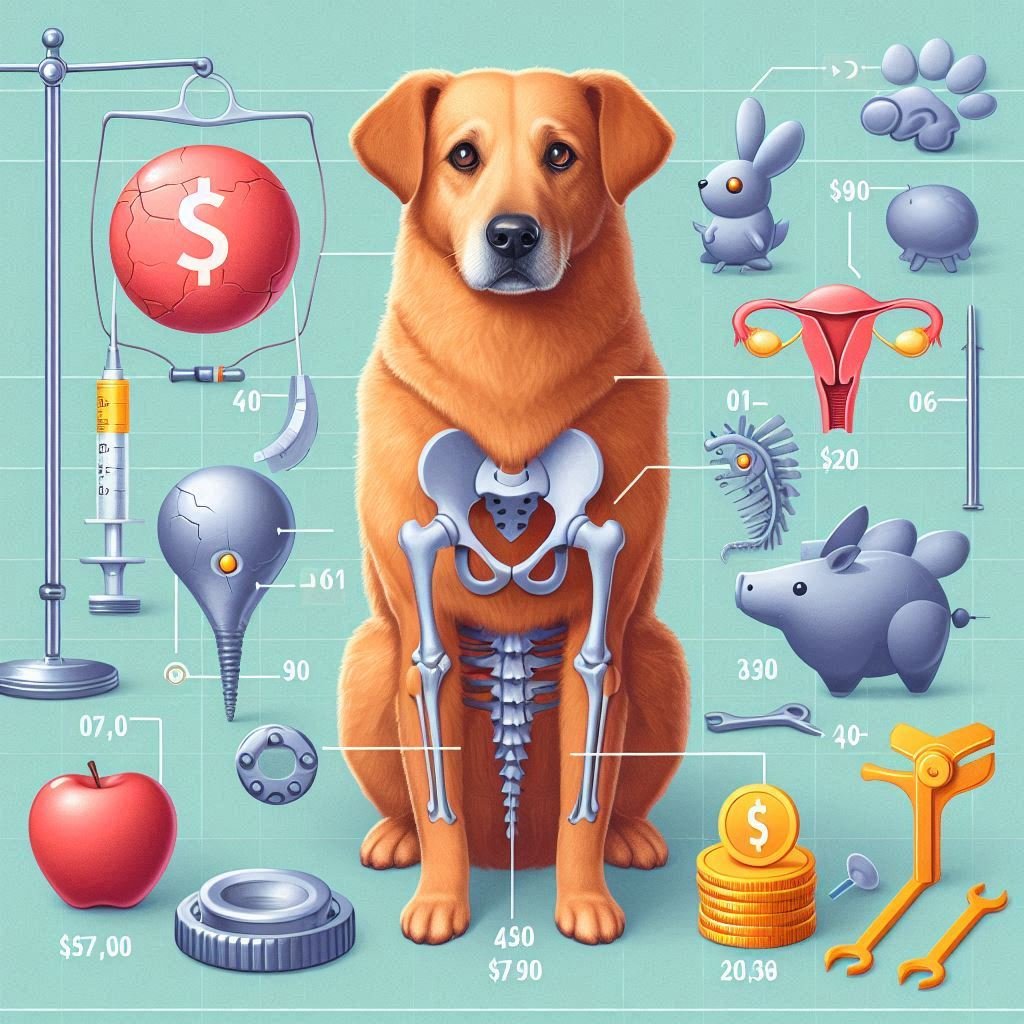When your dog struggles to walk due to hip problems, it feels like watching a champion race car slow down due to engine failure. Hip replacement surgery can bring them back to full speed, but the cost can be as unpredictable as the stock market. Prices range from $3,500 to $7,000, depending on various factors. But just like buying a house, choosing the right option requires careful comparison.

Below is a 16-point formula—a financial toolkit filled with strategies, metaphors, and practical advice to help you navigate through the complex world of dog hip surgery costs.
1-4: Understanding the Price Puzzle – The Building Blocks
- Type of Surgery (The Model of the Car) – Just like a sports car costs more than a sedan, the price of total hip replacement (THR) vs. femoral head ostectomy (FHO) varies significantly. THR is expensive but offers better mobility, while FHO is cheaper but works best for smaller dogs.
- Vet Expertise (The Brand Name Factor) – A highly experienced surgeon at a specialty clinic will charge more—like buying a designer brand versus a generic one.
- Clinic Location (The Real Estate Effect) – Surgery in a big city costs more than in rural areas, just like rent in New York vs. a small town.
- Hospital Facilities (The Hotel vs. Motel Analogy) – A high-end veterinary hospital with state-of-the-art equipment will charge more than a basic vet clinic.
5-8: Cost-Effective Alternatives – Finding Discounts
- Vet Schools (The Student Discount) – University veterinary programs offer low-cost surgery, like going to a training salon for a haircut instead of a luxury spa.
- Animal Charities (The Hidden Treasure) – Organizations like The Pet Fund or Bow Wow Buddies help cover vet expenses, just like scholarships for students.
- Low-Cost Clinics (The Budget Airline Approach) – Some veterinary clinics offer discounts, similar to how budget airlines provide cheap tickets with fewer luxuries.
- Second Opinions (The Price Matching Strategy) – Getting quotes from multiple vets is like comparing flight prices—you might find the same service for less.

9-12: Breaking Down Costs – The Hidden Charges
- Pre-Surgery Exams (The Prep Fees) – Just like buying a concert ticket comes with hidden fees, pre-surgery tests, X-rays, and bloodwork add to the total cost.
- Post-Surgery Care (The Maintenance Costs) – Recovery expenses like pain meds, rehab, and follow-ups can be as costly as car maintenance after buying a new vehicle.
- Complications & Revisions (The Unexpected Repairs) – If something goes wrong, the cost increases—like a leaky roof after buying a house.
- Hospital Stay Duration (The Hotel Bill Effect) – Longer hospitalization means higher costs, just like staying extra nights at a five-star hotel.
13-16: Smart Financing Strategies – Finding a Way to Pay
- Pet Insurance (The Safety Net) – A good pet insurance plan acts like a seatbelt, protecting you from unexpected financial crashes.
- Payment Plans (The Installment Option) – Many vets offer monthly payment options, just like buying a phone on an installment plan.
- Crowdfunding (The Community Chest) – Platforms like GoFundMe allow people to help fund your pet’s surgery, just like raising money for a community project.
- Personal Loans or Credit (The Backup Plan) – If all else fails, a low-interest personal loan acts as a lifeline in deep waters.
Conclusion: Navigating the Road to Affordable Care
Choosing the right hip surgery option for your dog is like selecting a travel package—you need to balance cost, comfort, and long-term benefits. With this 16-point formula, you can make an informed decision and ensure your furry friend gets the best treatment without breaking the bank.
Need help comparing specific vet clinic prices? Let me know!




